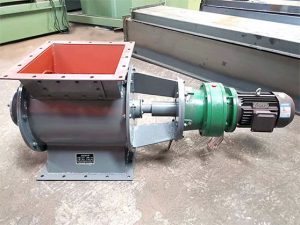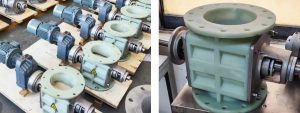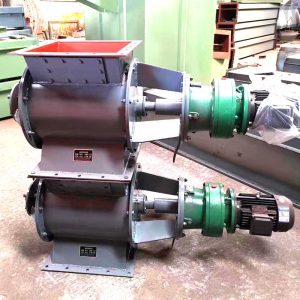A rotary control valve is a precision device used to regulate the flow, pressure, or direction of liquids and gases in industrial and mechanical systems. By rotating an internal element—such as a disc, spool or vane—it continuously adjusts the passage opening, providing fine‑tuned modulation rather than simple on/off control. This smooth actuation, rapid response, and high cycle life make rotary valves indispensable in process industries, pneumatic conveying, hydraulic machinery, and even musical instruments.
1. How a Rotary Control Valve Works
- Rotating Element: A shaft-driven rotor with pockets or ports turns to align with inlet and outlet passages.
- Flow Regulation: Partial rotation throttles flow proportionally, while full rotation opens or closes the passage.
- Seal Integrity: Tight tolerances and wear‑resistant materials prevent leakage under differential pressures.
2. Key Types & Applications
2.1 Rotary Airlock Valve (Airlock Rotary Valve)
- Function: Transfers powders, granules, or pellets between hoppers and conveyors without losing system pressure.
- Features:
- Airtight seal to maintain positive or negative pressure.
- Robust rotor pockets for abrasive materials.
- Common Materials: Cast iron, stainless steel, UHMW polyethylene for food‑grade.
2.2 Hydraulic Rotary Valve
- Function: Directs hydraulic fluid through multiple ports to control cylinders, motors, and actuators.
- Advantages:
- Compact footprint.
- Low internal leakage for precise motion control.
- Typical Uses: Excavators, steering units, press machines.
2.3 Rotary Valves in Brass Instruments
- Rotary Valve Trumpets & Rotary Valve Tuba (Tuba Rotary Valves, Tuba Rotary Valve):
- Reroute airflow through additional tubing when engaged.
- Provide smooth, silent valve action and accurate intonation.
- Preferred by soloists and orchestras for tonal consistency.
3. Selection & Troubleshooting Guide
| Factor | Consideration |
|---|---|
| Pressure ΔP | Maximum allowable differential pressure across valve. |
| Material | Compatibility with abrasive, corrosive, or food‑grade media. |
| Temperature | Seals and bearings rated for process temperatures. |
| Rotor Speed | Cycle rate to prevent wear and ensure service life. |
| Actuation | Manual, pneumatic, or electric actuator options. |
Common Issues & Fixes
- Rotor Seizure: Caused by contamination → Install upstream filter; increase clearances.
- Leakage: Worn seals or erosion → Replace packing; use hardened coatings.
- Irregular Flow: Incorrect rotor speed → Adjust gearbox ratio; verify motor RPM.
FAQ
What industries use rotary control valves?
They’re vital in chemical processing, food & beverage manufacturing, pharmaceuticals, HVAC airlocks, pneumatic conveying, and hydraulic systems for precise flow/pressure control.
How is a rotary valve different from a ball or gate valve?
Rotary control valves use a turning disc or spool for continuous throttling, whereas ball valves rotate a sphere for on/off service and gate valves lift a gate. Rotary valves offer finer modulation and faster cycling.
Can rotary airlock valves handle high pressures?
Yes. Designed for pneumatic conveying, high‑performance airlock valves maintain effective seals at elevated differential pressures, preventing system air loss.
How do you maintain a rotary control valve?
-
Lubricate bearings and seals per manufacturer schedule.
-
Inspect for erosion on rotor pockets and housing.
-
Replace wear rings or abrasion‑resistant liners in high‑cycle applications.
Conclusion
As a leading rotary valve manufacturer, we combine expert selection guidance, hands‑on troubleshooting advice, and in‑depth application know‑how—covering everything from industrial airlock feeders and hydraulic spools to precision rotary trumpets and tuba valves—so you have a single, trusted source to identify the ideal valve, solve maintenance challenges, and streamline your purchase process.




